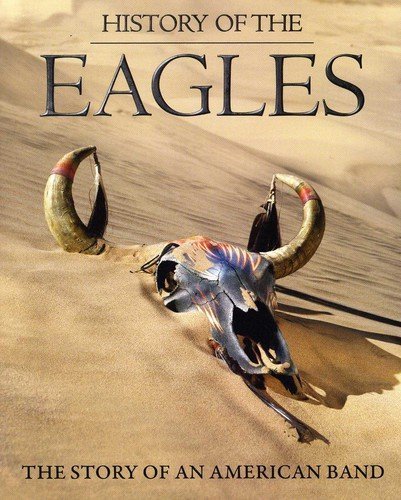
Filmmakers, take note: this is the way to celebrate a band’s legacy. History of the Eagles, a new documentary, chronicles the classic rock legends’ rise, breakup, and improbable reunion in an epic two-part film. Now out on DVD and Blu-ray, the movie is a must-own for Eagles fans and a stellar example of narrating a band’s story in a riveting yet objective manner.
Part One takes viewers on a journey through the band’s earliest years, critical and commercial peak, and eventual downward spiral due to drugs, alcohol, and clashing egos. New interviews with current and former Eagles members shed new light on their music, revealing trivia that may surprise casual fans (Bob Seger took a young Glenn Frey under his wing in the late 1960s! Kenny Rogers produced Don Henley’s first band’s only album!). Frey and Henley describe their years of working with early Eagles producer Glyn Johns; Frey bristled under Johns’ strict rules, thus leading to the group leaving his tutelage after two albums.
 While the film celebrates their considerable achievements, it does not shy away from controversies, namely the departures of Bernie Leadon, Randy Meisner, and Don Felder. Various musical and personal differences led to their quitting the band–for Felder, those wounds clearly still sting. “Newcomers” Joe Walsh and Timothy B. Schmit recall the group’s later conflict-ridden years–as Walsh aptly puts it, “we were all alphas.”
While the film celebrates their considerable achievements, it does not shy away from controversies, namely the departures of Bernie Leadon, Randy Meisner, and Don Felder. Various musical and personal differences led to their quitting the band–for Felder, those wounds clearly still sting. “Newcomers” Joe Walsh and Timothy B. Schmit recall the group’s later conflict-ridden years–as Walsh aptly puts it, “we were all alphas.”
After their 1980 breakup, few thought the Los Angeles-based band would ever perform together again. To paraphrase the Eagles’ comeback album title, hell sometimes does freeze over: Frey, Henley, Walsh, Felder, and Schmit reunited for a highly successful world tour in 1994. Part Two encompasses this period, briefly touching on Frey and Henley’s lucrative solo careers. Walsh looms large in this section, as he unflinchingly describes his long road to sobriety. The reunion proved key to his recovery: the other band members insisted that he could not take part in the tour unless he entered rehab. In new clips, Walsh credits his friends and colleagues for forcing him to face his demons.
While the reunion years (and the Eagles’ 1998 induction into the Rock and Roll Hall of Fame) found the group riding high, trouble was just around the corner. Contract disputes and personal differences led to Felder being fired from the group permanently. As Felder recalls the incident, he tears up when reminiscing about the happy years with his bandmates. Will he ever resolve his differences with Frey and Henley? One hopes, for all their sakes, that this may someday happen.
A third disc offers an all-too-brief treat: a concert from March 1977. Recorded at the Capital Centre in Largo, Maryland, the film showcases the band at their creative and commercial height. Touring behind the Hotel California album, the Eagles perform the title song as well as other hits. “Take It Easy,” “One of These Nights,” and “New Kid in Town” garner ecstatic reactions from the crowd. Perched on stools and armed with acoustic guitars, the Eagles render a beautifully unplugged version of “Best of My Love,” while Meisner’s falsetto soars on “Take It to the Limit.” An amusing Walsh rips through his own “Rocky Mountain Way” and pulls goofy faces during “New Kid in Town.” He thrills, however, when he engages in the guitar duel toward the end of “Hotel California.” No matter how many times that song plays, that rocking ending still sends shivers down the spine.
Despite its age, the concert footage looks and sounds largely intact. One criticism remains: why is Felder’s guitar buried deep in the mix during “One of These Nights”? That piercing solo plays a critical role in lending the track an edge. Here, one can barely discern the notes–was this present in the original film, or did this occur during remastering? In addition, the footage clocks in at 45 minutes; surely their concerts lasted much longer.
Overall History of the Eagles should be required viewing for any fan, casual or hard core. While it revels in the group’s many achievements, it also spotlights the “sex, drugs, and rock and roll” aspect of fame. Home movies and other archival footage depict the Eagles at work and at play, and members frankly reminisce about how they would play a bit too much. This balance between objectivity and subjectivity remains constant throughout the documentary, which makes History of the Eagles a thorough and fascinating examination of a classic band.